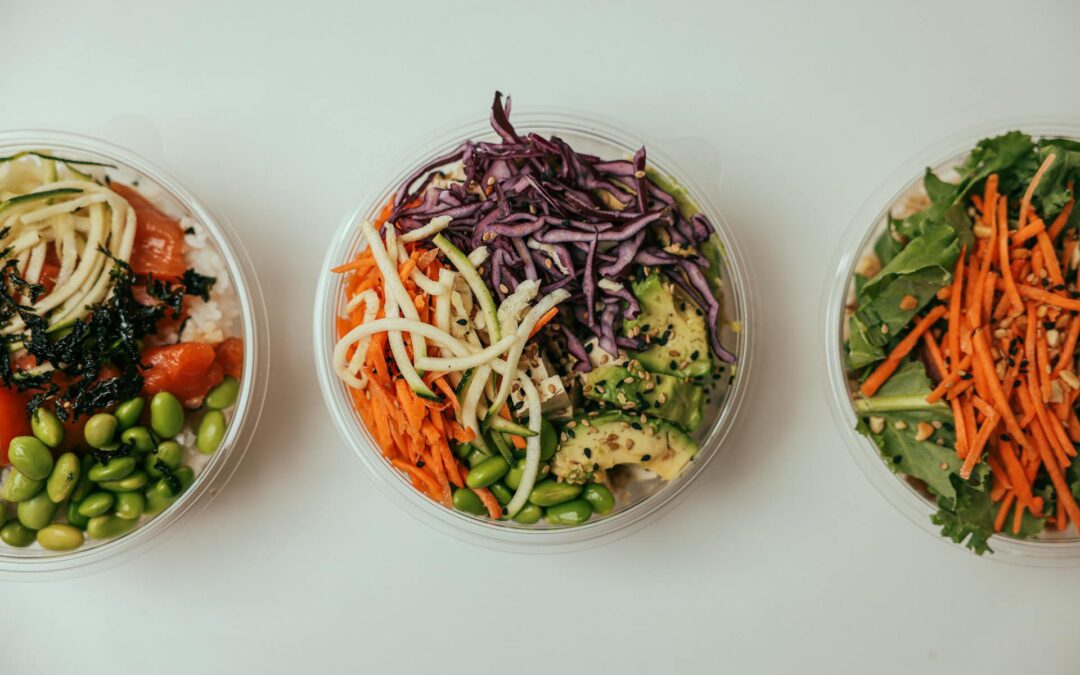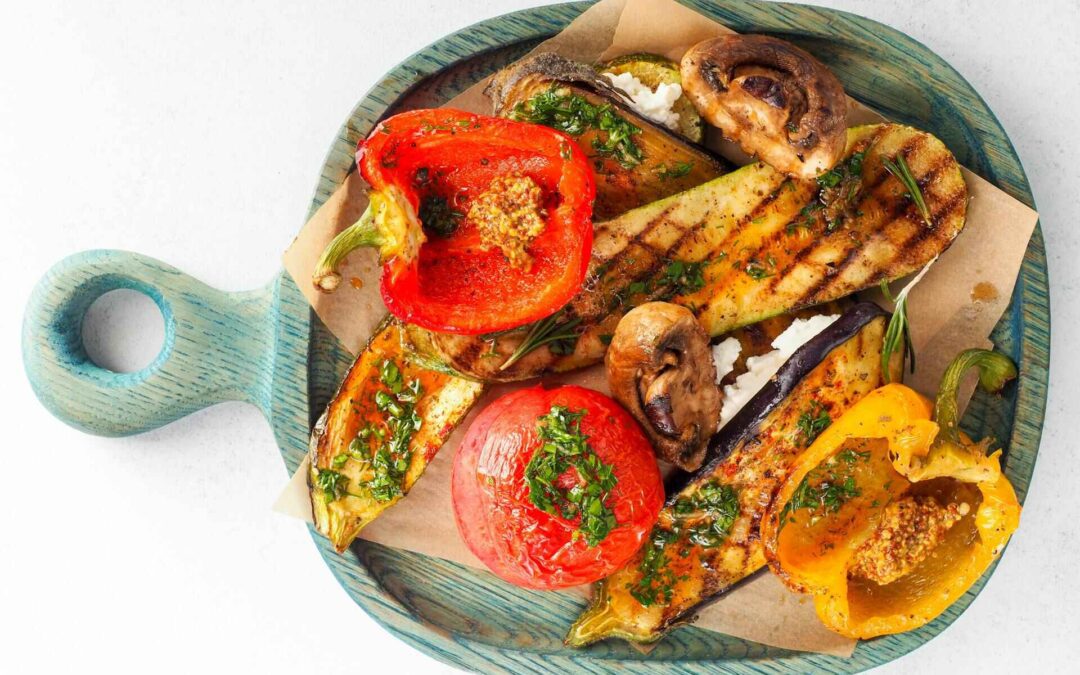This Low Carb Diet Cheat Sheet is your go-to guide for navigating a low carb lifestyle! Whether you’re aiming to lose weight, improve blood sugar levels, or simply make healthier choices, understanding which foods to eat and avoid on a low carb diet can make all the difference. In this guide, we’ll break down the essentials, helping you make informed, simple choices for sustained success on your low carb journey.
Ready to dive in? Let’s break it down and make low carb eating easier than ever!
What is a Low Carb Diet?
A low carb diet focuses on limiting the intake of carbohydrates, replacing them with protein and healthy fats. The goal is to reduce your body’s reliance on glucose (sugar) for energy and encourage it to burn fat instead. (1, 2)
Definition of a Low Carb Diet
A low carb diet typically involves cutting down on foods high in carbs like bread, pasta, and sugary treats. Instead, you’ll focus on foods that are high in protein and healthy fats, such as meat, fish, and avocados.
- Low-carb diets like Keto, Paleo, and Atkins have been popular for years.
- These diets typically restrict carbs to under 100 grams per day, depending on the specific plan you’re following.
Low Carb Diet vs. Other Diets
Wondering how the low carb diet stacks up against others? Here’s a quick comparison:
- Keto: Extreme low carb with high fat.
- Paleo: Focuses on whole foods, but includes some carbs.
- Atkins: Gradual reduction of carbs, starting very low and slowly increasing over time.
Why Are Low Carb Diets So Popular?
The popularity of low carb diets has surged due to their potential benefits for weight loss, energy levels, and blood sugar control. Many people find that reducing carbs helps them feel less bloated and more energized throughout the day.
Benefits of a Low Carb Diet
The low carb diet offers a variety of health benefits, many of which are tied to reduced carbohydrate intake. Here are some of the key advantages: (3)
Weight Loss and Appetite Control
When you eat fewer carbs, your body turns to fat stores for energy. This process, known as ketosis, helps with fat loss over time. Plus, eating more protein and healthy fats helps you feel full, reducing the urge to overeat. (4)
Improved Blood Sugar and Insulin Sensitivity
For those with diabetes or insulin resistance, a low carb diet can help stabilize blood sugar levels. It reduces the need for insulin, preventing those dramatic spikes and crashes that come with a high carb diet.
Heart Health and Cholesterol Levels
Contrary to what you might think, eating healthy fats on a low carb diet can improve your cholesterol levels. Studies have shown that it can raise levels of HDL (the good cholesterol) while lowering triglycerides, which are linked to heart disease.
Understanding Macronutrients in a Low Carb Diet
To understand a low carb diet, it’s important to break down the three macronutrients: carbs, protein, and fat. These nutrients play different roles in your body, and balancing them is the key to success.
Carbohydrates – Good vs. Bad Carbs
Not all carbs are created equal. There are two main types: complex and simple.
- Complex Carbs: Found in vegetables, whole grains, and legumes. They break down more slowly and provide steady energy.
- Simple Carbs: Found in sugary snacks, white bread, and soda. These cause spikes in blood sugar and lead to energy crashes.
Proteins in a Low Carb Diet
Protein is crucial for muscle repair and overall health. On a low carb diet, focus on high-quality proteins like grass-fed meats, fish, eggs, and some plant-based options like tofu.
Fats in a Low Carb Diet
Healthy fats are essential on a low carb diet. These include:
- Omega-3 and Omega-6 fatty acids from fish like salmon.
- Monounsaturated fats from sources like olive oil and avocados.
Avoid trans fats found in processed foods, which are harmful to your heart health.
Foods to Eat on a Low Carb Diet
Now let’s get to the good part: what you can eat on a low carb diet! Here’s a list of low carb-friendly foods that will keep you satisfied without breaking your diet.
Low Carb Vegetables
Vegetables are a great source of vitamins and minerals, but some are higher in carbs than others. Stick to these low carb vegetables:
- Leafy greens like spinach, kale, and arugula.
- Cruciferous vegetables like broccoli, cauliflower, and Brussels sprouts.
High-Quality Proteins
Your body needs protein for muscle maintenance and repair. These options fit perfectly into a low carb diet:
- Grass-fed beef, chicken, and turkey.
- Fish like salmon and tuna.
- Eggs.
Healthy Fats
Healthy fats are your friend. They help keep you full and provide essential fatty acids. Some of the best options include:
- Olive oil.
- Avocados.
- Nuts and seeds.
Dairy Products
Full-fat dairy is perfectly fine on a low carb diet, as long as you don’t go overboard. Consider these options:
- Cheese (the full-fat kind).
- Butter.
- Full-fat yogurt.
Beverages
Staying hydrated is key, but be mindful of what you drink. Water should be your go-to, but you can also enjoy:
- Herbal teas.
- Coffee (without added sugar or sweeteners).
Avoid sugary beverages like soda and energy drinks.
Low Carb Snacks
When hunger strikes, reach for these low carb snacks to stay on track:
- A handful of nuts.
- Hard-boiled eggs.
- Cheese slices.
Foods to Avoid on a Low Carb Diet
While there are plenty of delicious foods to enjoy on a low carb diet, there are also some you’ll want to avoid. Here’s a list of foods to avoid:
High-Sugar Foods
Sugar is one of the first things you’ll need to cut out:
- Sugary snacks like candy, pastries, and ice cream.
- Sugary beverages like sodas, fruit juices, and sports drinks.
Starchy Vegetables
Certain vegetables, while nutritious, are too high in carbs for a low carb diet. These include:
- Potatoes.
- Corn.
- Peas.
Grains and Bread
Grains are typically high in carbs, so they should be avoided:
- Wheat and white flour.
- Pasta, rice, and bread.
Processed and Packaged Foods
Packaged foods are often loaded with hidden sugars and unhealthy carbs:
- Frozen meals and processed snacks.
- Junk food like chips and crackers.
Hidden Carbs in Sauces and Dressings
Some sauces and dressings have more carbs than you might think. Watch out for:
- Ketchup.
- Barbecue sauce.
- Salad dressings with added sugar.
Alcohol and Sugary Cocktails
Alcohol can throw off your low carb diet, especially sugary cocktails like margaritas and daiquiris. Stick to low carb drinks like dry wine or spirits without sugary mixers.
Low Carb Diet Meal Plan Suggestions
Need some meal inspiration? Here are a few low carb friendly meal ideas to keep things exciting and delicious. (5)
Low Carb Breakfast Ideas
Start your day with a protein-packed, low carb breakfast:
- Scrambled eggs with avocado and spinach.
- Greek yogurt with almonds and chia seeds.
Low Carb Lunch Ideas
For lunch, try these simple, filling options:
- Grilled chicken salad with olive oil and lemon.
- Lettuce-wrapped turkey and cheese sandwiches.
Low Carb Dinner Ideas
Dinner is the perfect time to get creative with your low carb meals:
- Baked salmon with asparagus and a side of sautéed spinach.
- Beef stir-fry with broccoli and peppers.
Low Carb Dessert Ideas
Yes, you can still enjoy dessert on a low-carb diet:
- Keto cheesecake with an almond flour crust.
- A small piece of dark chocolate.
How to Transition to a Low Carb Diet
Making the switch to a low carb diet can be challenging at first. Here’s how to transition smoothly.
Step-by-Step Guide to Starting a Low Carb Diet
Gradually reduce your carb intake instead of cutting carbs completely right away. This will help your body adjust to using fat for fuel instead of glucose.
Managing Cravings and Hunger Pangs
Cravings can be tough, but eating more protein and healthy fats will help keep you full. Make sure you’re eating enough to avoid hunger.
Common Mistakes to Avoid
Some people make the mistake of cutting too many carbs too quickly, which can lead to fatigue and cravings. Give yourself time to adjust.
Low Carb Diet and Exercise
Pairing your low carb diet with the right exercise routine can enhance your results.
Best Exercises for a Low Carb Lifestyle
The best exercises include a mix of strength training, cardio, and HIIT (high-intensity interval training). These workouts can help you burn fat and maintain muscle while following a low carb plan.
Adjusting Your Workouts for Low Carb
To maintain energy during workouts, consider carb cycling or eating a small portion of complex carbs before intense exercise.
Common Challenges on a Low Carb Diet
Let’s face it—every diet has its challenges. Here’s how to handle the common struggles on a low carb diet.
Low Carb Flu and How to Overcome It
When you first start cutting carbs, you might experience something called the “low carb flu.” This can cause symptoms like fatigue, headaches, and irritability. Stay hydrated, get plenty of electrolytes, and power through!
Digestive Issues and Fiber Intake
Since many high-fiber foods like whole grains are off-limits, you might need to increase your intake of low carb, high-fiber vegetables to avoid constipation.
Importance of Hydration
Staying hydrated is essential for any diet, but it’s especially important when following a low carb diet. As your body adjusts to consuming fewer carbs, it begins to use up glycogen stores, which hold water. When glycogen levels drop, you naturally lose more water through urination, leading to dehydration if you’re not careful.
Here’s why hydration is crucial on a low carb diet:
- Prevents “Keto Flu” Symptoms: Dehydration can mimic symptoms of the dreaded “keto flu,” such as headaches, fatigue, and muscle cramps. Drinking plenty of water helps keep these symptoms at bay.
- Aids in Digestion: Low-carb diets often increase protein and fat intake, which can sometimes lead to digestive issues like constipation. Staying hydrated ensures that your digestive system runs smoothly.
- Supports Energy Levels: When you’re low on carbs, your body relies more on fats for energy. Proper hydration helps maintain optimal energy levels throughout the day.
Low Carb Diet Alternatives
If a strict low carb diet doesn’t work for you, there are other options to consider.
Ketogenic Diet
The keto diet is a stricter form of low carb, with a focus on high fat intake to enter ketosis. It’s great for rapid weight loss but may be too restrictive for some.
Paleo Diet
The Paleo diet includes more carbs than keto but focuses on unprocessed, whole foods. It’s a good choice if you prefer a less restrictive approach to low carb eating.
Mediterranean Diet with Low Carb Focus
The Mediterranean diet is often praised for being one of the healthiest ways to eat, and with a few adjustments, it can easily be adapted to fit a low carb lifestyle. This approach combines the heart-healthy benefits of the traditional Mediterranean diet with the metabolic advantages of cutting back on carbs.
Here’s how you can shift the Mediterranean diet to a low carb version:
- Prioritize Lean Proteins: The Mediterranean diet emphasizes fish, especially fatty fish like salmon and mackerel, which are rich in omega-3 fatty acids. These proteins can replace carb-heavy meals while still providing essential nutrients.
- Focus on Healthy Fats: Olive oil is a staple in the Mediterranean diet, and it’s perfect for a low carb approach. Add healthy fats like avocados, nuts, and seeds to your meals to boost satiety and maintain energy levels without carbs.
- Low Carb Vegetables as a Base: Instead of carb-heavy sides like bread or pasta, opt for low carb vegetables like spinach, broccoli, and zucchini. These veggies provide fiber, vitamins, and minerals without spiking blood sugar.
- Limit Grains and Starches: In a low carb Mediterranean diet, it’s important to cut back on traditional staples like whole grains, rice, and potatoes. Replace them with nutrient-dense alternatives like cauliflower rice or zucchini noodles.
Low Carb Myths Debunked
Let’s clear up some common myths about low carb diets.
Myth 1: Low Carb Diets Are Bad for Heart Health
Studies show that eating healthy fats can improve heart health by raising HDL cholesterol and lowering triglycerides.
Myth 2: You Can’t Eat Any Carbs on a Low Carb Diet
One of the biggest misconceptions about a low carb diet is that you have to eliminate all carbohydrates. This simply isn’t true. While it’s true that the diet limits high-carb foods, the goal is to focus on healthy carbs that don’t cause blood sugar spikes.
On a low carb diet, you can still enjoy:
- Non-starchy vegetables like spinach, kale, and cauliflower, which are packed with nutrients and fiber.
- Berries such as strawberries and blueberries, which provide a small amount of carbs but are also rich in antioxidants.
- Nuts and seeds, which contain healthy fats, protein, and minimal carbohydrates.
The key is choosing the right types of carbs in moderation. Low carb diets focus on reducing refined carbs like bread, pasta, and sugary snacks, while allowing whole, nutrient-dense options that fit within your daily carb limit.
Myth 3: Low Carb Diets are Unsustainable Long-Term
Another common myth is that low carb diets are impossible to maintain over time. However, with a balanced approach and proper planning, low carb diets can be incredibly sustainable.
The reason many people find low carb diets easier to stick with is that they promote satiety. Foods rich in protein and healthy fats help you feel full for longer, reducing cravings for unhealthy snacks. Additionally, as your body adjusts, the diet becomes second nature, making it easier to follow for the long haul.
FAQ for Low Carb Diet Cheat Sheet
1. How many carbs should I eat on a low carb diet?
On a low carb diet, most people aim to consume between 20–50 grams of net carbs per day. However, the exact amount depends on your individual goals—those looking for weight loss or following a ketogenic diet may stick to the lower end, while others may eat up to 100 grams for maintenance.
2. Can I eat fruits on a low carb diet?
Yes, but it’s best to stick to low-sugar fruits like berries (strawberries, blueberries, raspberries). These fruits are lower in carbs compared to options like bananas or grapes, and they provide essential vitamins and antioxidants without spiking blood sugar levels.
3. What are the signs of too few carbs in my diet?
If you’re not eating enough carbs, you may experience symptoms like fatigue, dizziness, irritability, brain fog, and constipation. These signs indicate that your body may need a bit more carbohydrate intake, or you might need to increase your intake of fiber and hydration.
4. How fast can I lose weight on a low carb diet?
Weight loss on a low carb diet varies by person, but it’s common to lose 2–6 pounds in the first week, primarily due to water weight loss. After that, a steady weight loss of 1–2 pounds per week is typical, depending on how strictly you follow the diet and your level of physical activity.
5. Is the low carb diet safe for everyone?
A low carb diet can be safe for most people, but it’s always best to consult with a healthcare provider, especially if you have conditions like diabetes, kidney disease, or are pregnant. They can help tailor the diet to your specific health needs.
The Bottom Line
Choosing a low carb diet can be a game-changer for your health and well-being, whether your goal is weight loss, better blood sugar control, or just a more balanced approach to eating. The best part is that it doesn’t have to be overly restrictive or difficult to maintain. By focusing on whole foods, lean proteins, healthy fats, and low carb vegetables, you can enjoy a satisfying and sustainable diet that supports your long-term health.
As with any major lifestyle change, it’s normal to experience a few bumps in the road. The key is to listen to your body and find the balance that works for you. Whether you’re just starting or have been following this way of eating for a while, always remember that a low carb diet is flexible—you don’t need to be perfect to see results. Making small, consistent changes will add up over time.
By now, you should have a solid understanding of what to eat and what to avoid on a low carb diet. You’ve also learned about common myths, helpful strategies for dealing with cravings, and the importance of staying hydrated. With this cheat sheet as your guide, you’ll be well-equipped to navigate any challenges and enjoy the benefits of a healthier, more fulfilling way of eating.
So go ahead—embrace your low carb lifestyle, and let your body thrive with the right foods!







0 Comments